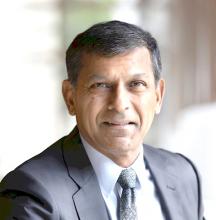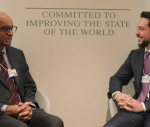You are here
Building back broader
Feb 13,2021 - Last updated at Feb 13,2021
CHICAGO — US President Joe Biden wants to “build back better” after the pandemic. It’s a widely shared goal. But what exactly does it mean, and how should we do it?
Clearly, we should build back with more equality of opportunity. Many communities in the United States and elsewhere in the developed world would not look out of place in a poor country: decrepit schools, crumbling infrastructure and rising levels of social dysfunction, including crime and substance abuse.
These communities have shrunk as people with opportunities elsewhere have left, leaving everyone else in an even thicker miasma of hopelessness. Some of these communities have been disadvantaged for a long time, having been hammered by a previous wave of trade- or technology-induced joblessness. Others have fallen behind more recently, albeit for similar reasons.
But technology and trade have also created new possibilities for economic activity in these communities and thus the potential for economic revival. The COVID-19 pandemic has forced many to work from home and connect with colleagues via the Internet, greatly reducing any stigma previously associated with this arrangement. After the pandemic ends, many firms will offer their employees the option of coming to the office only when necessary.
In that case, a worker’s home need not be in the same county, or even the same state, as their office. As skilled workers in cities search forcheaper, less congested places to raise a family, some may want to return to their roots, to places they left long ago. And with in-person business meetings becoming more dispensable, entire firms also may relocate. These trends will boost demand for local goods and services, creating more local jobs.
Technology not only helps to spread economic activity geographically, but also can connect remote areas to markets everywhere. As Adam Davidson points out in his book “The Passion Economy: The New Rules for Thriving in the Twenty-First Century”, online platforms allow small enterprises to advertise niche products globally, and enable specialised potential buyers to find them. For example, the Wengerds, an Amish family in Ohio, have built a flourishing business selling state-of-the-art horse-drawn farm equipment, a niche market if ever there was one, to other Amish farms across the US.
Not every community can flourish even under these changed circumstances. Years of underinvestment in infrastructure, including broadband, parks and schools, may render some communities unattractive to well-paid professionals and their families. High levels of crime and substance abuse could keep businesses away. And local workers may need retraining for new skilled jobs. Communities may need to change in order to attract economic activity, but how do they do so without more economic activity in the first place?
The tempting but wrong answer is to centralise the solution. Massive one-size-fits-all programmes devised in a national or state capital cannot tackle a local community’s specific challenges. For one community, the biggest problem may be the absence of fast and affordable access to transportation networks; for another, it may be the lack of safe outlets for youthful energy. A community’s inhabitants are in the best position to understand the most pressing needs.
The answer certainly includes more outside funding, including further tax subsidies to encourage investment in “opportunity zones”. But that is not enough. Without a committed local leadership devising plans to address specific local challenges, and an engaged community to aid and monitor their work, funds are more likely to be wasted than not. Unfortunately, years of hopelessness can exhaust a community’s leadership and leave its members apathetic.
What could induce change? One possibility is for the national or state government, or philanthropic institutions, to create grant competitions to fund groups with innovative proposals for projects in their communities. Ideally, a project would have the backing of the official community leadership, such as the mayor’s office, but that need not be essential if it can proceed without their support.
The extent of proposed community involvement and engagement in the project would, however, be an important criterion for funding. So, for example, a public garden created and maintained by the community would be preferred to a contractor-built park. Stronger community leadership and broader local engagement should be important legacies of funded proposals.
Project leaders would also be given access to professional consultants, who could help remedy weaknesses in the proposal, as well as to leaders of similar projects elsewhere so that ad hoc support groups emerge. Not all proposals would be funded, of course, but the process of private citizens coming together to devise a project can create the kernel of a new local leadership if the current one is asleep at the wheel. If the grant competition can revive or generate broader local energy, it will have worked.
Moreover, unsuccessful applicants could resubmit their project proposals in subsequent competitions after addressing earlier weaknesses, thereby sustaining the enthusiasm the initial proposal engendered. Finally, the lessons from successful initiatives could be shared with other communities seeking projects of their own, with the aim of establishing a learning network that could share ideas, expertise, best practices, and common pitfalls.
This is not idle theorising. Developed countries like Canada have been creating such networks to encourage bottom-up remedies to local problems that have hitherto defied solutions.
Developed countries are spending enormous amounts of money in an attempt to recover from the pandemic. It would be a real shame if this were wasted on old and tired schemes that have rarely worked. The money should go to those who desperately need new opportunities, and know how to create them. That may be one of our best hopes for building back better.
Raghuram G. Rajan, former governor of the Reserve Bank of India, is professor of Finance at the University of Chicago Booth School of Business and the author, most recently, of “The Third Pillar: How Markets and the State Leave the Community Behind”. Copyright: Project Syndicate, 2021.












